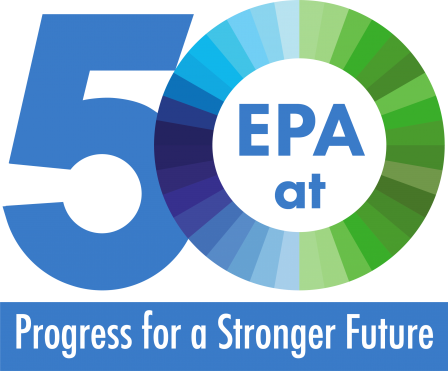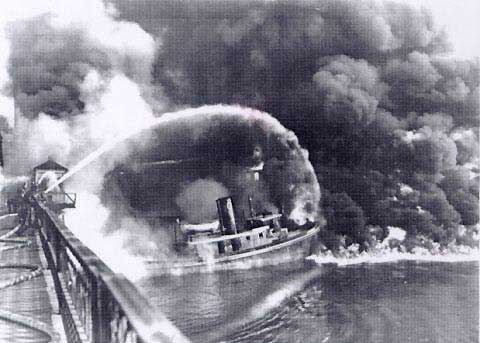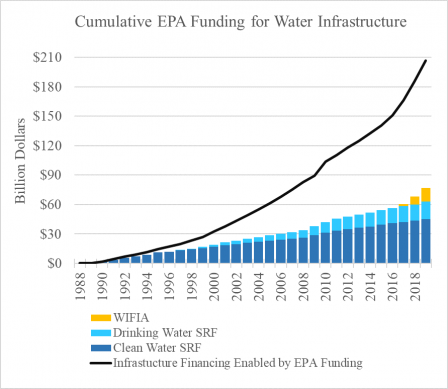Agency highlights water accomplishments during yearlong celebration

December 2, 2020, will mark 50 years since the U.S. Environmental Protection Agency (EPA) launched its mission to provide federal regulatory leadership in service of public health and the environment. Leading up to the anniversary, EPA’s website and social media channels are reviewing the agency’s progress in a different aspect of environmental regulation each month throughout 2020.
The #EPAat50 theme for February was “Protecting America’s Waters.” Throughout the month, the agency highlighted milestones and priorities from key EPA water programs instituted since 1970, focusing on safeguarding surface waters, fundraising for water and wastewater infrastructure, and addressing emerging threats to water quality.
“In honor of EPA’s 50th anniversary, it is important to take a moment to reflect on the progress we have made in protecting our nation’s waters to help support our health, our environment, and our economy,” said David Ross, EPA Assistant Administrator for Water, in a statement.
Safeguarding Surface Waters
In 1969, rampant water pollution led Ohio’s Cuyahoga River to catch fire, resulting in costly damage and heightened interest in environmental regulation. Within the next few years, U.S. Congress and President Richard Nixon established EPA and enacted the Clean Water Act, which still today acts as the cornerstone of U.S. water quality regulation.
Half-a-century later, the evolving suite of EPA water quality programs has made a crucial difference for the health and safety of the nation’s waterways.

For example, in the last two decades alone, EPA’s National Estuary Program has helped restore more than 2 million acres of estuary habitat, according to an EPA release. Likewise, since 2005, EPA’s Section 319 Grant Program has helped partially or fully restore approximately 250,000 acres of lakes and ponds and around 10,000 miles of rivers and streams through efforts to help local communities address nonpoint sources of water pollution.
EPA has also provided key leadership across states to help protect and rehabilitate such major waterbodies as the Great Lakes, the Gulf of Mexico, and the Chesapeake Bay. The EPA administrator serves as chair of the Great Lakes Restoration Initiative, which since its establishment in 2010, has remediated more than 4 million yd3 of contaminated sediment, according to the initiative’s website. As a leading partner of the Gulf of Mexico Alliance, EPA is coordinating meetings between 12 Gulf Coast states and five federal agencies to address the largest hypoxic aquatic zone in the U.S., the Alliance reports. The agency is also the main regulatory driver for the Chesapeake Bay Program, which recently reported the highest estimate of Bay water quality rehabilitation since data-collection began in 1985.
“EPA is proud of the significant progress we have made in protecting and restoring our nation’s waters, particularly our surface waters,” Ross said in a statement. “Many of our lakes, rivers, and streams that were once severely contaminated now support healthy aquatic ecosystems and the surrounding communities.”
Community Investment
Innovative EPA financing programs have enabled countless U.S. municipalities, states, and tribes to address their specific water quality and quantity challenges with infrastructure that would be prohibitively expensive for many communities acting by themselves.
Since 1988, EPA has contributed more than $45 billion to Clean Water State Revolving Fund (SRF) programs. Low-interest loans made available through SRF programs during that period have collectively provided more than $138 billion in financial assistance for critical wastewater and stormwater infrastructure projects, according to an EPA release. The agency is also a key supporter of Drinking Water SRF programs, contributing more than $21 billion to support drinking-water infrastructure projects across the U.S.
Throughout 2020, the agency’s Office of Water plans to contribute an additional $1.6 billion to the Clean Water SRF program, as well as $1.07 billion to the Drinking Water SRF program.

Water and wastewater infrastructure financing continue to be EPA focuses. Since the agency introduced its Water Infrastructure Finance and Innovation Act (WIFIA) loan program in 2017, EPA has issued 17 loans providing more than $3.5 billion for water infrastructure projects. All told, the loans’ low interest rates compared to typical financing through municipal bonds will save borrowers up to $1.2 billion while creating more than 16,000 jobs, according to the agency.
“I have seen first-hand the impact this program has had on local communities in just a short amount of time,” said EPA Administrator Andrew Wheeler, in a statement. “The WIFIA program has proven to be a tremendous tool in achieving environmental protections and fostering economic growth in communities across the country.”
Staying Current at 50
While EPA used much of February to look back at its milestones for waterway improvement and regulation, it also emphasized its readiness for modern challenges in water management.
For one, the agency released the latest update to its National Water Reuse Action Plan (WRAP) on Feb. 27. The initiative aims to set a forward-looking agenda for research and regulation development to advance the safety and feasibility of water reuse.
EPA also discussed its recent work on per- and polyfluoroalkyl substances (PFAS), a contaminant of emerging concern that does not degrade in the environment. In line with the agency’s PFAS Action Plan, introduced in 2019, EPA recently proposed regulatory determinations for common PFAS contaminants in drinking water.
At the 2019 Water Environment Federation Technical Exhibition and Conference (WEFTEC) in Chicago, EPA representatives announced the agency’s new Water Workforce Initiative aimed at addressing widespread staff shortages anticipated in the water and wastewater sectors as many experienced water professionals near retirement age. The campaign involves coordinating public outreach and education efforts with cities and states to attract interest in water careers.
“Building a dynamic and diverse water workforce for the 21st century is absolutely vital to continuing to deliver on our sector’s mission to protect public health and the environment,” 2018-2019 Water Environment Federation (Alexandria, Va.) President Thomas Kunetz said in a statement. “WEF is grateful that EPA is collaborating with our organization and others to address critical workforce needs and believes the agency’s support will help advance current initiatives and better target federal efforts to the water sector.”
Learn more about EPA’s contributions to the water sector and stay up-to-date with the agency’s 50th anniversary celebration throughout 2020 at the EPA website.
— Justin Jacques, WEF Highlights








April 10, 2020
Achievements